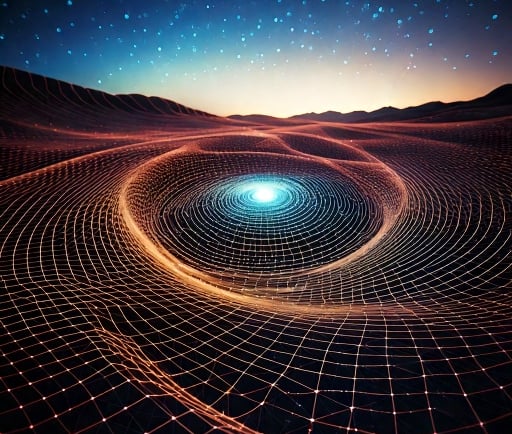Gravitational Lensing: Bending Space and Time


Understanding Gravitational Lensing
Gravitational lensing is a fascinating phenomenon in the field of astrophysics, where the presence of a massive object, such as a galaxy cluster, warps the fabric of space and time. This warping causes light emitted from distant celestial bodies to bend, distort, and magnify as it navigates its path around these massive cosmic structures. The implications of this phenomenon extend beyond simple light manipulation; they provide valuable insights into the universe’s structure and the distribution of dark matter.
The Science Behind Gravitational Lensing
The principle underlying gravitational lensing stems from Albert Einstein’s Theory of General Relativity, which posits that mass can curve space-time. When light from a distant star or galaxy passes near a massive object, the light's trajectory is altered due to the curvature of space around the object. This effect can create multiple images, arcs, or even rings of the background object. These formations are collectively known as 'lensed images' and serve as key observational evidence of gravitational lensing in action.
Types and Applications of Gravitational Lensing
There are chiefly three types of gravitational lensing: strong lensing, weak lensing, and microlensing. Strong lensing occurs when a massive object creates substantial distortion, resulting in prominent and clearly observable arcs and multiple images. Weak lensing, on the other hand, involves subtler distortions that are less discernible but still significant for analyzing cosmic structures. Lastly, microlensing involves smaller celestial objects, such as individual stars, that momentarily increase the brightness of a more distant star as light is bent around them.
Gravitational lensing has profound applications in cosmology. It serves as a critical tool for mapping the distribution of dark matter, which, despite being invisible and non-luminous, contributes significantly to the universe's overall mass. By analyzing the gravitational lensing effects, astronomers can infer the presence of dark matter halo surrounding galaxies, thereby aiding our understanding of cosmic evolution.
Furthermore, observations of gravitational lensing allow scientists to explore the expansion rate of the universe and to study the physical properties of distant galaxies. The effects of gravitational lensing not only enhance our comprehension of the cosmos but also help us develop new methodologies for studying distant objects that are otherwise challenging to observe due to their vast distances.
Conclusion
In summary, gravitational lensing presents an extraordinary perspective on the interplay between light and mass. By revealing how massive objects can manipulate light, it opens a window into understanding the universe’s composition and structure. As technology advances and our observational capabilities improve, the study of gravitational lensing will undoubtedly continue to yield new discoveries and deepen our knowledge of the cosmos, offering a tangible connection to the intricate mechanics that govern our universe.
